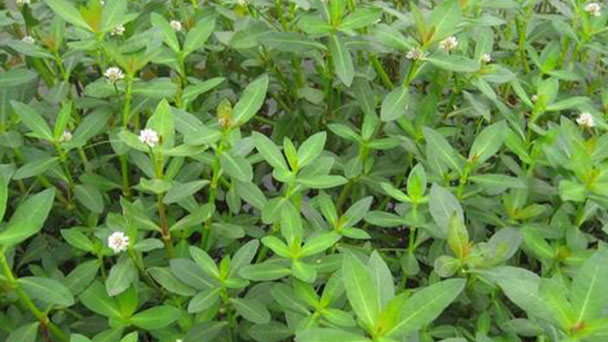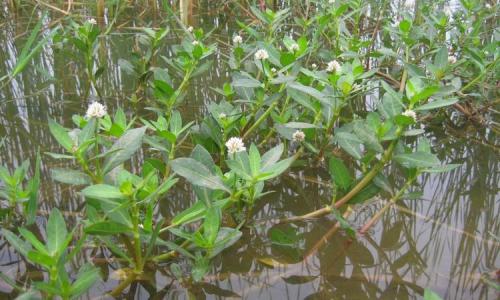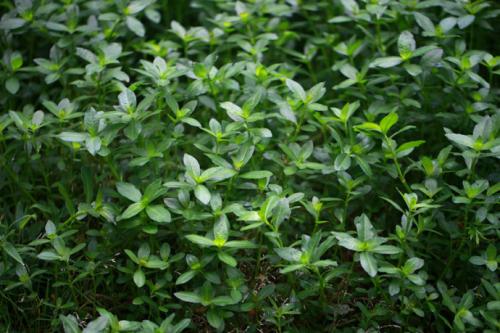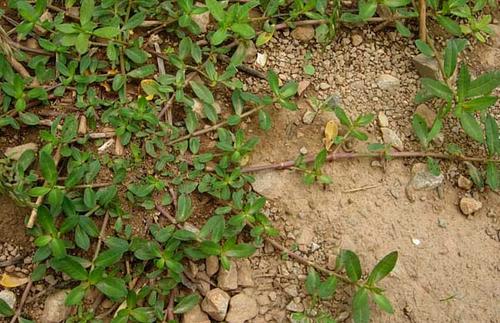Alligator weed (Alternanthera Philoxeroides) profile
Written by admin
Mar 05 2021

Alligator weed, Latin name: Alternanthera philoxeroides (Mart.) Griseb, belongs to the amaranthus family, lotus seedweed perennial herbs; Alligator weed stem base is prostrate, upper ascending, tubular, inconspicuous 4-rowed, branched, young stem and leaf axils with white or rust-colored pilose, stem glabrous when old, reserved only in longitudinal furrows on both sides. Leaf-blade is rectangular, rectangular obovate-oblanceolate or obovate-lanceolate, the base is connected into cup-shaped; Stamens are oblong-lobate, ca. As long as stamens, apically divided into narrow strips; Ovarian is obovate, short stipitate, abaxially laterally flat, apex rounded.
Introduced into China in 1930, Alligator weed is a very harmful invasive species and is listed as the first foreign invasive species in China. The tender stems and leaves can be used as vegetables. In spring and summer, the tender stems and leaves are picked, washed, scalded with boiling water, and cut off after rinsing with clear water. The tender stems and leaves can be served cold and fried. It can also feed cattle, rabbits and pigs.
Alligator weed picture

Morphological characteristics of Alligator weed
Stems
Alligator weed is a perennial herb; Stem base is prostrate, distally ascending, tubular, inconspicuous 4-ribbed, branched, young stem and leaf axils white or rusty pubescent, stem glabrous when old, reserved only in longitudinal furrows on both sides.
Leaf
The leaves of Alligator weed are rectangular, oblong-obovate or obovate-lanceolate, 2.5-5 cm long, 7-20 mm wide, acute or obtuse at the top, mucronate, tapered at the base, entire, glabrous on both sides or with apical hairs and ciliate hairs above, and granular protuberances below; Petiole is 3-10 mm long, glabrous or slightly pilose.
Flowers
Flowers of Alligator weed are dense, into a avuncular head, solitary in leaf axils, globose, 8 -- 15 mm in diameter; Bracts and bracteoles are white, apex acuminate, 1-veined; Bracts are ovate, 2 -- 2.5 mm long, bracteoles lanceolate, 2 mm long; Perianth segments of Alligator weed are rectangular, 5-6 mm long, white, shiny, glabrous, apically acute, dorsal laterally oblate; Stamens filaments are 2.5-3 mm long, basally connected cup-shaped; Stamens are oblong-lobate, ca. As long as stamens, apically divided into narrow strips; Ovarian of Alligator weed is obovate, short stipitate, abaxially laterally flat, apex rounded.
Ecological habits of the Alligator weed
Aquatic Alligator Weed can germinate and grow at an average temperature of 8.5℃, while terrestrial Alligator Weed begins to germinate at 9.5℃. Alligator weed with an average temperature of 10.5℃ has emerged widely and started vegetative growth. Seedlings begin with 2 to 4 pairs of tender leaves, leaves small, purplish-red. The average temperature increased at about 21℃, the leaf area increased rapidly, but the number of internodes did not increase.
Alligator weed grows in ponds and ditches.
The distribution region of the Alligator weed
Alligator weed is originally from Brazil. Alligator weed was introduced into Beijing, Jiangsu, Zhejiang, Jiangxi, Hunan and Fujian in China, and later became wild.
Alligator weed main value
Alligator weed edible value
The tender stems and leaves of Alligator weed can be eaten as vegetables. In spring and summer, the tender stems and leaves of the Alligator weed can be picked, washed, scalded with boiling water, and cut off after rinsing with clear water. It can be cold and fried for food, which is crisp and delicious. It can also feed cattle, rabbits and pigs.
Medicinal value
Alligator weed can be used as a medicine. There is QingreLi water, cool blood detoxification effect.

Alligator weed invasive species
(1) Block waterway and affect water traffic;
(2) crowding out other plants and making community species simple;
(3) Covering water surface, affecting fish growth and fishing;
(4) harm crops in the field, so that the yield is damaged;
(5) a large number of field ditches, affecting farmland drainage and irrigation;
(6) Invading wetlands and lawns and destroying landscapes;
(7) breeding mosquitoes and flies, harmful to human health.
Alligator weed control
1. Plant quarantine should be adopted, and it is suggested to establish and improve the quarantine system of this plant in China.
2. Mechanical manual control: the prevention and control of Alligator weed should focus on prevention. In combination with agricultural practices, great efforts should be made to remove the roots in the soil during tilling and changing stubble, and then be sure to dry or burn them; In low population density or newly discovered invasive sites, manual removal, eradication. For the newly invaded Alligator weed, digging 1m deep and burning it thoroughly for three consecutive years can play the effect of eradication. In many glasses of water, the Alligator weeds are fished by hand, but if the plants are not treated in time, they will die and come back to life.
3. Chemical control: In China, chemical control is one of the main measures to control Alligator weed. Chlorofluoropyroacetic acid (so Taron, water root net), glyphosate or add dimethyltetrachloride and other herbicides are used more in China.

Latest Updated
- Benefits of Bugleweed - 7 Science-backed Health Benefits
- Bugleweed Dangers & Side Effects - Is It Poisonous?
- How to Plant Evergreen Trees - What You Should Know
- When to Plant Evergreens - Grow Guide for Evergreen Trees
- 12 Wonderful Evergreen Shrubs for Your Garden
- 12 Popular Evergreen Plants with Pictures for Beginners
- When And How To Prune A Lilac Bush Like a Pro
- How to Grow & Care for Lilac Vine (Hardenbergia Violacea)
- Japanese Lilac Tree (Syringa Reticulata) Care & Propagation Guide
- Shumard Oak Pros and Cons - What to Know
Popular Articles
- Winter maintenance of Antirrhinum Majus
- How to Grow Terminalia Mantaly Tree
- How to Grow and Care for Crossostephium Chinense
- How to grow Antirrhinum Majus in spring
- Peristeria Elata (Dove Orchid) Profile: Info & Care Guide
- Underwatered Snake Plant (Sansevieria Trifasciata) - Signs And How To Fix
- How to Care for Brazilian Jasmine Plant (Mandevilla Sanderi)
- How to Grow & Care for Graptopetalum Purple Delight in Summer
- Rosa Chinensis (China Rose): Plant Growing & Care Tips
- How to Care for Baby Sun Rose (Aptenia Cordifolia)